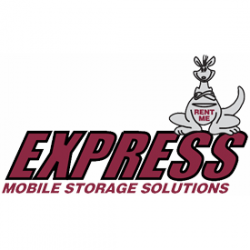http://en.wikipedia.org/wiki/Twenty-foot_equivalent_unit
The twenty-foot equivalent unit (often TEU or teu) is an inexact unit of cargo capacity often used to describe the capacity of container ships and container terminals. It is based on the volume of a 20-foot long intermodal container, a standard-sized metal box which can be easily transferred between different modes of transportation, such as ships, trains and trucks.
One TEU represents the cargo capacity of a standard intermodal container, 20 feet (6.1 m) long and 8 feet (2.4 m) wide. There is a lack of standardisation in regards to height, ranging between 4.25 and 9.5 feet (1.30 and 2.9 m), with the most common height being 8.5 feet (2.6 m). Also, it is common to designate 45-foot (14 m) containers as 2 TEU, rather than 2.25 TEU.
Equivalence
As noted above, the TEU is an inexact unit, and hence cannot be converted precisely into other units. The related unit forty-foot equivalent unit (often FEU or feu) however is defined as two TEU. The most common dimensions for a 20-foot (6.1 m) container are 20 feet (6.1 m) long, 8 feet (2.4 m) wide, and 8.5 feet (2.6 m) high, for a volume of 1,360 cubic feet (39 m3). However, both 9.5 feet (2.9 m) tall High cube and 4.25 feet (1.30 m) half height containers are also reckoned as 1 TEU. This gives a volume range of 680 cubic feet (19 m3) to 1,520 cubic feet (43 m3) for one TEU.
While the TEU is not itself a measure of mass, some conclusions can be drawn about the maximum mass that a TEU can represent. The maximum gross mass for a 20-foot (6.1 m) dry cargo container is 24,000 kilograms (53,000 lb). Subtracting the tare mass of the container itself, the maximum amount of cargo per TEU is reduced to approximately 21,600 kilograms (48,000 lb).
Similarly, the maximum gross mass for a 40-foot (12 m) dry cargo container (including the 9.5 feet (2.9 m) high cube container) is 30,480 kilograms (67,200 lb). After correcting for tare weight, this gives a cargo capacity of 26,500 kilograms (58,000 lb).
Twenty-foot, “heavy tested” containers are available for heavy goods such as heavy machinery. These containers allow a maximum weight of 67,200 pounds (30,500 kg), an empty weight of 5,290 pounds (2,400 kg), and a net load of 61,910 pounds (28,080 kg).
